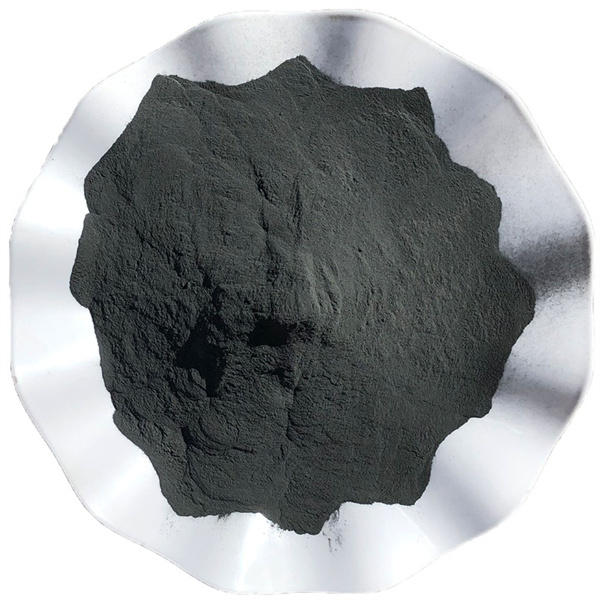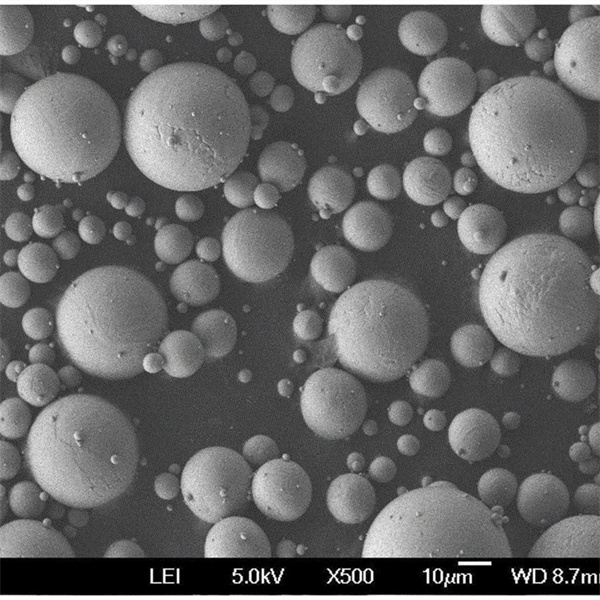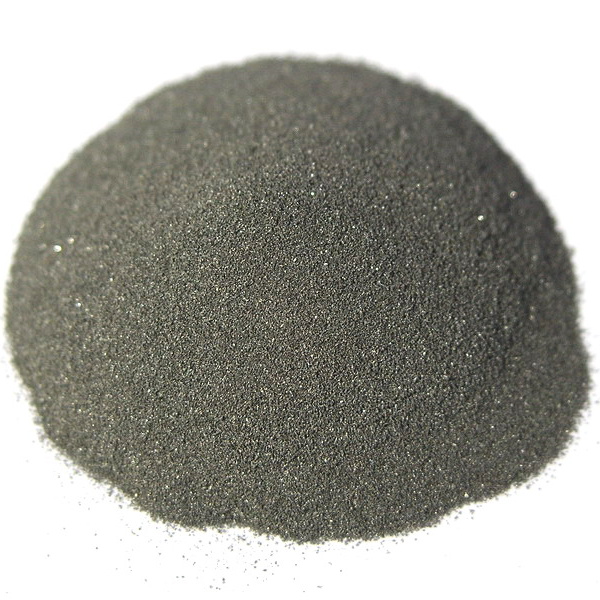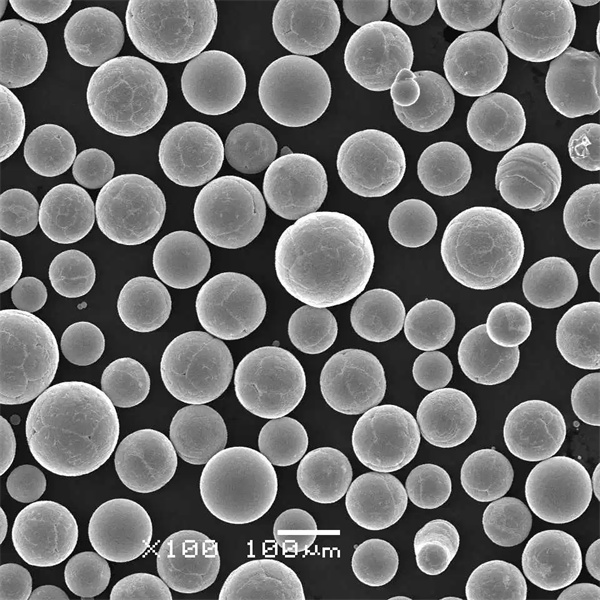430L Powder
430L powder is a ferritic stainless steel powder containing 17% chromium with additions of molybdenum and niobium for enhanced corrosion resistance. It provides an optimal balance of corrosion resistance, strength, weldability and cost.
Low MOQ
Provide low minimum order quantity to meet different needs.
OEM & ODM
Provide customized products and design services to meet unique customer needs.
Adequate Stock
Ensure fast order processing and provide reliable and efficient service.
Customer Satisfaction
Provide high quality products with customer satisfaction at the core.
share this product
Table of Contents
Overview of 430L Powder
430L powder is a ferritic stainless steel powder containing 17% chromium with additions of molybdenum and niobium for enhanced corrosion resistance. It provides an optimal balance of corrosion resistance, strength, weldability and cost.
Key properties and advantages of 430L powder:
430L Powder Properties and Characteristics
| Properties | Details |
|---|---|
| Composition | Fe-17Cr-Nb-Mo alloy |
| Density | 7.7 g/cc |
| Particle shape | Irregular, angular |
| Size range | 10-150 microns |
| Apparent density | Up to 50% of true density |
| Flowability | Moderate |
| Corrosion resistance | Excellent in many environments |
| Strengthening | Solid solution and precipitation strengthening |
430L powder is widely used in chemical processing, marine hardware, automotive exhaust components, industrial valves and flanges, and structural parts needing weathering resistance.
430L Powder Composition
Typical composition of 430L stainless steel powder:
430L Powder Composition
| Element | Weight % |
|---|---|
| Iron (Fe) | Balance |
| Chromium (Cr) | 16-18% |
| Carbon (C) | 0.12% max |
| Silicon (Si) | 1% max |
| Manganese (Mn) | 1% max |
| Molybdenum (Mo) | 0.5% max |
| Niobium (Nb) | 0.3-0.6% |
| Nitrogen (N) | 0.03% max |
| Sulfur (S) | 0.03% max |
- Iron provides the base matrix and ductility
- Chromium enhances corrosion and oxidation resistance
- Niobium and molybdenum provide precipitation strengthening
- Carbon, nitrogen and sulfur are controlled as tramp elements
The composition is designed to provide optimum corrosion resistance while retaining suitable ductility, toughness and weldability.
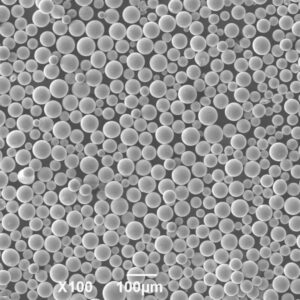
430L Powder Physical Properties
430L Powder Physical Properties
| Property | Values |
|---|---|
| Density | 7.7 g/cc |
| Melting point | 1400-1450°C |
| Electrical resistivity | 0.6-0.7 μΩ-m |
| Thermal conductivity | 26 W/mK |
| Curie temperature | 1440°C |
| Maximum service temperature | 650-750°C |
- Density is moderately high for a stainless steel
- Provides high temperature strength and corrosion resistance
- Resistivity higher than pure iron or low alloy steels
- Becomes paramagnetic above Curie point
- Can withstand moderately high operating temperatures
The physical properties make 430L suitable for corrosive environments and moderately high temperature applications requiring oxidation resistance.
430L Powder Mechanical Properties
430L Powder Mechanical Properties
| Property | Values |
|---|---|
| Tensile strength | 450-650 MPa |
| Yield strength | 250-350 MPa |
| Elongation | 35-45% |
| Modulus of elasticity | 190-210 GPa |
| Hardness | 80-90 HRB |
| Impact strength | 50-100 J |
- Provides moderately high strength for a stainless steel
- Excellent ductility and impact toughness
- Strength can be further increased through heat treatment
- Hardness is relatively low compared to martensitic grades
The properties provide a good combination of strength, ductility, and toughness required for many corrosive environments and load conditions.
430L Powder Applications
Typical applications of 430L stainless steel powder include:
430L Powder Applications
| Industry | Example Uses |
|---|---|
| Chemical | Tanks, valves, pipes, pumps |
| Automotive | Exhaust components, fuel injection parts |
| Construction | Cladding, architectural features |
| Oil and gas | Wellhead equipment, drilling tools |
| Manufacturing | Pressing tooling, molds, dies |
Some specific product uses:
- Marine hardware like railings, hinges, fasteners
- Automotive exhaust manifolds, mufflers, catalytic converters
- Chemical processing equipment like valves and flanges
- Oil country tubular goods for downhole environments
- Architectural paneling, cladding and decorative features
Its excellent corrosion resistance combined with good manufacturability make 430L widely used across industries needing weathering and oxidation resistance.
430L Powder Specifications
Relevant specifications and standards:
430L Powder Standards
| Standard | Description |
|---|---|
| ASTM A743 | Standard for corrosion resistant chromium steel castings |
| ASTM A744 | Standard for corrosion resistant chromium steel sheet and strip |
| AMS 5759 | Annealed corrosion resistant steel bar, wire, forgings |
| SAE J405 | Automotive weathering steel sheet |
| DIN 17440 | Stainless steels for corrosion resistant applications |
These standards define:
- Chemical composition limits of 430L alloy
- Permissible impurity levels like S, P
- Required mechanical properties
- Approved production methods
- Compliance testing protocols
- Proper packaging, labeling and documentation
Meeting certification requirements ensures suitability of the powder for the target applications and markets.
430L Powder Particle Sizes
430L Powder Particle Size Distribution
| Particle Size | Characteristics |
|---|---|
| 10-45 microns | Ultrafine grade for high density and surface finish |
| 45-150 microns | Coarse grade provides good flowability |
| 15-150 microns | Standard grade for pressing and sintering |
- Finer particles allow greater densification during sintering
- Coarser powder flows better and fills die cavities uniformly
- Size range is tailored based on final part properties needed
- Both gas and water atomized powders are available
Controlling particle size distribution allows optimizing processing behavior and final part performance.
430L Powder Apparent Density
430L Powder Apparent Density
| Apparent Density | Details |
|---|---|
| Up to 50% of true density | For irregular powder morphology |
| 3.5-4.5 g/cc typical | Improves with greater packing density |
- Higher apparent density improves powder flow and compressibility
- Irregular morphology limits maximum packing density
- Values up to 60% are possible with spherical powders
- High apparent density improves press filling efficiency
Higher apparent density leads to better manufacturing productivity and part quality.
430L Powder Production Method
430L Powder Production
| Method | Details |
|---|---|
| Gas atomization | High pressure inert gas breaks molten metal stream into fine droplets |
| Water atomization | High pressure water jet breaks metal into fine particles |
| Vacuum induction melting | High purity input materials melted under vacuum |
| Multiple remelting | Improves chemical homogenization |
| Sieving | Classifies powder into different particle size ranges |
- Gas atomization provides clean, spherical powder morphology
- Water atomization is a lower cost process with irregular particles
- Vacuum melting and remelting minimizes gaseous impurities
- Post-processing allows customization of particle sizes
Automated production and stringent quality control result in consistent powder suitable for critical applications.
430L Powder Pricing
430L Powder Pricing
| Factor | Impact on Price |
|---|---|
| Purity level | Higher purity increases cost |
| Powder morphology | Spherical powder costs more than irregular |
| Particle size | Ultrafine powder more expensive |
| Order volume | Larger quantities have lower per unit pricing |
| Additional services | Customization adds cost |
Indicative Pricing
- Irregular 430L powder: $5-8 per kg
- Spherical 430L powder: $8-12 per kg
- Large volume pricing can be 30-50% lower
Pricing depends on purity, particle characteristics, order volume, and level of customization required.
430L Powder Suppliers
430L Powder Suppliers
| Company | Location |
|---|---|
| Höganäs | Sweden |
| Sandvik | Germany |
| Daido Steel | Japan |
| CNPC Powder | China |
| Carpenter Powder Products | USA |
| Erasteel | France |
Key supplier selection factors:
- Powder grades offered
- Production capacity
- Particle morphology and size ranges
- Batch analysis and certification
- Pricing and minimum order quantity
- Customization services
- Delivery times and reliability
430L Powder Handling and Storage
430L Powder Handling
| Recommendation | Reason |
|---|---|
| Use PPE and ventilation | Avoid exposure to fine metallic particles |
| Ensure proper grounding | Prevent static discharge while handling |
| Avoid ignition sources | Powder can combust in oxygen atmosphere |
| Use non-sparking tools | Prevent possibility of ignition during handling |
| Follow safety protocols | Reduce risk of burns, inhalation, and ingestion |
| Store in stable containers | Prevent contamination or oxidation |
As 430L powder is flammable, ignition and explosion risks should be controlled during handling and storage. Otherwise it is relatively safe with proper precautions.
430L Powder Inspection and Testing
430L Powder Testing
| Test | Details |
|---|---|
| Chemical analysis | ICP and XRF verify composition |
| Particle size distribution | Laser diffraction determines size distribution |
| Apparent density | Hall flowmeter test per ASTM B212 standard |
| Powder morphology | SEM imaging shows particle shape |
| Flow rate analysis | Gravity flow rate through specified nozzle |
| Loss on ignition | Determines residual moisture content |
Stringent testing ensures the powder meets the required chemical purity, particle characteristics, density, morphology, and flowability per applicable specifications.
430L Powder Pros and Cons
Advantages of 430L Powder
- Excellent corrosion resistance in many environments
- Good ductility, toughness and weldability
- Cost-effective compared to austenitic grades
- Can be precipitation hardened to increase strength
- Good high temperature oxidation resistance
- Readily formable using conventional techniques
Disadvantages of 430L Powder
- Lower strength than martensitic or ferritic grades
- Requires care during welding to avoid sensitization
- Susceptible to chloride stress corrosion cracking
- Limited high temperature tensile strength
- Lower hardness and wear resistance than austenitic grades
- Surface discoloration over time in outdoor exposure
Comparison With 304L Powder
430L vs 304L Stainless Steel Powder
| Parameter | 430L | 304L |
|---|---|---|
| Density | 7.7 g/cc | 8.0 g/cc |
| Strength | 450-650 MPa | 520-620 MPa |
| Corrosion resistance | Excellent | Outstanding |
| Heat resistance | Good | Excellent |
| Weldability | Good | Excellent |
| Cost | Low | High |
| Uses | Automotive, construction | Chemical processing, marine |
- 430L has slightly lower strength but better cost
- 304L has superior corrosion and heat resistance
- 430L has better room temperature toughness
- 304L is preferred for applications above 500°C
- 430L suited for outdoor structures and automotive parts
430L Powder FAQs
Q: What are the main applications of 430L stainless steel powder?
A: Main applications include automotive exhaust components, chemical processing equipment, oil and gas tools, architectural paneling and cladding, marine hardware, and manufacturing tooling.
Q: What precautions should be taken when working with 430L powder?
A: Recommended precautions include ventilation, PPE, proper grounding, inert atmosphere, avoiding ignition sources, using non-sparking tools, and safe storage in stable containers.
Q: What is the effect of niobium addition in 430L stainless steel?
A: Niobium provides precipitation strengthening through formation of nitrides and carbides. This strengthens the steel while retaining good corrosion resistance and ductility.
Q: How does 430L differ from 409 and 439 stainless steel grades?
A: 430L has higher corrosion resistance than 409 and higher strength than 439. It provides an optimal combination of corrosion resistance, formability, weldability and cost.
About Met3DP
Product Category
HOT SALE
CONTACT US
Any questions? Send us message now! We’ll serve your request with a whole team after receiving your message.

